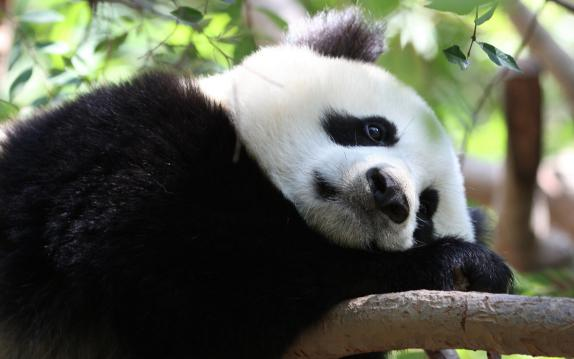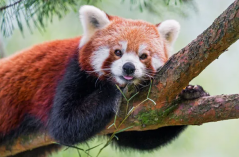SAD是一种与季节有关的以抑郁为特征的心境障碍,也称季节性情感障碍,这种抑郁与白天长短、环境光照有关,所以很多人会在冬季发作。那么动物会经历季节性情感障碍吗?
During winter in the northern hemisphere, particularly in the higher latitudes, some people’s bodies long for the sun so much that they develop a seasonal affective disorder, or SAD, becoming joyless and depressed. SAD is relatively common in humans, but this phenomenon isn’t unique to humans.
在北半球的冬天,特别是在高纬度地区,一些人的身体非常渴望阳光,以至于他们患上了季节性情感障碍,也叫SAD,从而变得不快乐和沮丧。SAD在人类中相对常见,但这种现象并不是人类独有的。
When animals are moved from their native habitats to new locations — such as being transferred from southern to northern latitudes — they undergo similar consequences, experiencing their own version of SAD. This is particularly problematic when it comes to zoo animals, says Kristine Gandia of the University of Stirling.
当动物从它们的原生栖息地迁移到新的地方时——比如从南纬地区转移到北纬地区——它们也会经历类似的后果,经历它们自己的SAD。斯特林大学的克里斯汀·甘迪亚说,这在动物园的动物身上尤其成问题。
Gandia’s team wanted to understand how SAD affects zoo animals, so they picked 11 giant pandas to study. Pandas do not hibernate (冬眠) during winter. They live in the bamboo forests of the mountain ranges in south central China, particularly in Sichuan, Shaanxi, and Gansu provinces, which are located much farther south than Scotland. They make great study subjects because many zoos have panda cameras, which means that the animals can be viewed remotely and quietly. Gandia along with her twelve colleagues dedicated a year to analyzing videos of pandas from five distinct zoos — some inside the animals’ natural habitat range and others in the higher latitudes of the northern climates. Unsurprisingly, their findings revealed that “pandas in zoos showed reduced activity levels compared to those within their latitudinal range.”
甘迪亚的团队想要了解SAD是如何影响动物园动物的,所以他们选择了11只大熊猫进行研究。熊猫在冬天不冬眠。它们生活在中国中南部山脉的竹林中,尤其是四川、陕西和甘肃,这些省份比苏格兰更靠南。它们是很好的研究对象,因为许多动物园都有熊猫相机,这意味着可以远程安静地观察动物。甘迪亚和她的12位同事花了一年的时间分析了来自5个不同动物园的熊猫视频,其中一些在动物的自然栖息地范围内,另一些在北方气候的高纬度地区。不出所料,他们的研究结果显示,“动物园里的大熊猫与同纬度范围内的大熊猫相比,活动水平较低。”
People try to reduce the bad effects of SAD in winter. Some spend more time outside, especially in the morning. Some travel to places with more sun in winter. Gandia says zoos can do similar things. “With the indoor enclosures (圈地), you can control light and temperature. If you make the lighting like their native habitats, it can help animals follow their natural rhythms,” says Gandia. “Creating an environment that mimics the conditions in which creatures evolved to live can not only make them healthier and happier, but also preserve struggling species.”
人们试图在冬天减少SAD的不良影响。有些人花更多的时间在户外,尤其是在早上。有些人在冬天去阳光更多的地方旅行。甘迪亚说动物园也可以做类似的事情。“有了室内围栏,你可以控制光线和温度。如果你让灯光像它们的原生栖息地一样,它可以帮助动物遵循它们的自然节奏,”甘迪亚说。“创造一个模仿生物进化生存条件的环境,不仅能让它们更健康、更快乐,还能保护那些正在挣扎的物种。”
剩余段落暂不支持预览,下载文章即可阅读全文,有任何疑问请您联系客服【18011429143】微信同号。

























